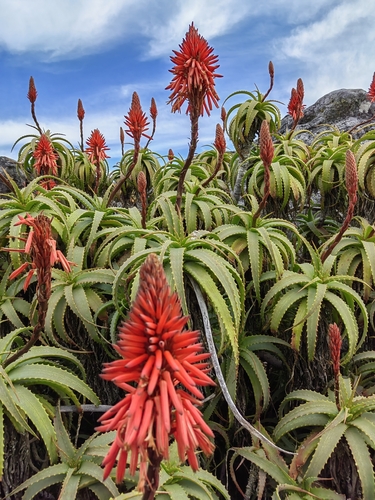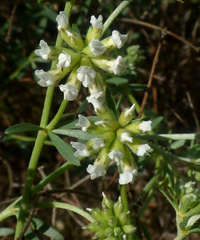Candelabra aloe
Aloe arborescens
Aloe arborescens is a robust and versatile species belonging to the Asphodelaceae family. Known commonly as "candelabra aloe" or "tree aloe," this plant is native to Southern Africa but has been extensively cultivated in Mediterranean climates, including the Comunidad Valenciana, for its hardiness and striking appearance.
The plant is a perennial succulent that forms multi-branched shrubs with an average height of 2 to 3 meters. Its structural composition is characterized by a strong central trunk with numerous offsets, allowing it to expand and cover significant ground areas.
- Leaves: Its leaves are long, narrow, and sword-shaped, with a distinct green to greyish-green hue. The edges are adorned with small, white teeth, adding to its ornamental value and acting as a natural deterrent to pests.
- Flowers: Aloe arborescens is particularly admired for its vibrant red to orange tubular flowers, which bloom in dense, elongated racemes. The flowering period typically occurs during the winter months, providing a splash of color when most other vegetation lies dormant.
- Habitat and Growth: The plant thrives in full sun and well-drained soils, displaying remarkable drought resistance. It is commonly found in rocky and coastal habitats within the Comunidad Valenciana, where it contributes to the local ecosystem by attracting pollinators such as bees and hummingbirds.
- Uses: Aside from its aesthetic appeal, Aloe arborescens is valued for its medicinal properties. The gel from its leaves is used in traditional remedies to treat burns, cuts, and other skin ailments.
This species, with its striking foliage and blossoms, is not only a jewel of xeriscaped gardens but also plays a crucial role in supporting biodiversity in its regions. In the Comunidad Valenciana, it can be seen adding dramatic flair to both private and public landscapes.







